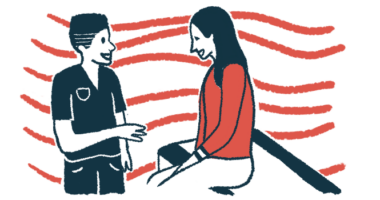Ultomiris Safe and Effective for Children With aHUS, Phase 3 Trial Shows

Ultomiris (ravulizumab-cwvz) is safe and effective in children with atypical hemolytic uremic syndrome (aHUS), data from a Phase 3 clinical trial show.
These findings were in the study “The long-acting C5 inhibitor, ravulizumab, is effective and safe in pediatric patients with atypical hemolytic uremic syndrome naïve to complement inhibitor treatment,” published in Kidney International.
aHUS is caused by abnormal activation of part of the immune system called the complement system, resulting in the progressive destruction of red blood cells. It is frequently characterized by kidney problems, most notably thrombotic microangiopathy (TMA) — when the small blood vessels inside the kidneys become clogged, which can result in kidney failure.
Ultomiris is a monoclonal antibody (a lab-made protein), developed by Alexion Pharmaceuticals, that works to inhibit the activity of the C5 complement protein, thereby blocking the over-activation of the complement system.
Ultomiris was effectively designed by modifying Soliris (eculizumab) — an earlier complement inhibitor also developed by Alexion — so that the medication would last longer in the body, requiring less frequent administration.
Ultomiris was approved to treat aHUS in adults and children ages 1 month and older by the U.S. Food and Drug Administration in 2019. A prior study reported the results of a Phase 3 clinical trial (NCT02949128) that tested the medication in adults with aHUS, showing good safety and efficacy.
Now, an international team of researchers detailed the results of another Phase 3 trial (NCT03131219) evaluating the medication in children and adolescents up to age 17. The trial, sponsored by Alexion, enrolled 21 children with aHUS who had never before been treated with a complement inhibitor.
Participants received an initial loading dose of Ultomiris based on their body weight on day one, followed by maintenance doses on day 15 and every four to eight weeks thereafter, again based on weight.
Safety analyses were generally consistent with what has been reported in prior studies. Side effects were reported in all participants, with the most common being fever, headache, the common cold, diarrhea, and vomiting. Fourteen patients experienced serious adverse events, with the most common (each occurring in two participants) being abdominal pain and viral infection of the digestive tract.
Of the 21 enrolled patients, 18 were included in efficacy analyses — 10 were female, nine were white, and the median age was 5.2. Three were excluded for reasons like not meeting laboratory criteria for certain efficacy measures.
All but one of these 18 patients who completed the initial 26-week trial enrolled in its extension phase. The one who did not, a 21.6-month-old white female, discontinued due to worsening anemia and high blood pressure; laboratory tests were broadly indicative of complement activation. Of note, after a pre-planned analysis of study data, the dose used for this child’s weight category was increased to ensure adequate levels of Ultomiris to block complement activation.
The trial’s primary endpoint was complete TMA response, defined as normalization of lactate dehydrogenase levels (a marker of red blood cell destruction), normalization of platelet levels, and a 25% or greater improvement in serum creatinine (a marker of kidney function).
During the initial 26-week trial, 14 (77.8%) patients achieved complete TMA response. By week 50, 17 had achieved complete TMA response.
Analyses of the individual components of TMA response were generally positive, and other measurements indicated that the treatment improved kidney function. Of the six children on dialysis at the study’s start, all were off dialysis by week 50, and no patient not initially on dialysis required its use during the study.
“Dialysis is burdensome and debilitating, having a severe impact on the quality of life of children,” the researchers wrote.
“Overall, renal [kidney] function improved substantially across the cohort,” they added.
In nine patients with available data, quality-of-life measures indicated a clinically meaningful easing of fatigue after both 26 and 50 weeks of treatment.
“This improvement is especially important in patients with a chronic disease such as aHUS and supports a favorable risk-benefit ratio of treatment with ravulizumab [Ultomiris],” the researchers wrote.
Laboratory measurements indicated that Ultomiris’ use rapidly and completely lowered C5 activity, which was kept sustainably low throughout the entire 50 weeks.
“Ravulizumab provided immediate, complete and sustained complement C5 inhibition, resulting in rapid improvement in renal and hematologic [blood-related] parameters across 26 weeks, and further increase in response rate over longer duration, with no unexpected safety concerns,” the researchers concluded.
“The results from this study support the use of ravulizumab in children for resolution of TMA caused by aHUS for a minimum treatment period of 6 months,” they added.






